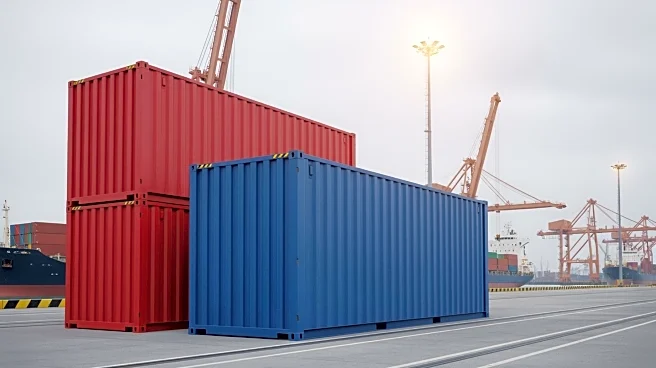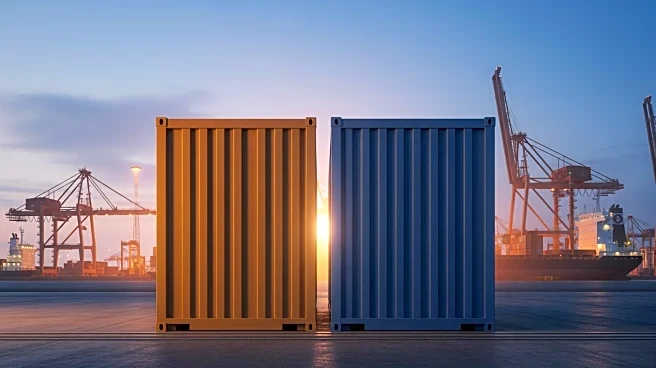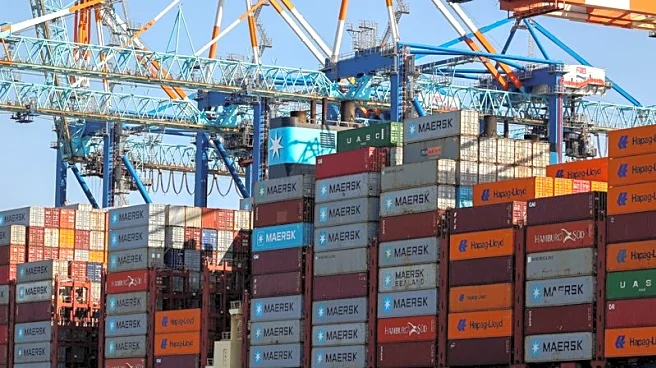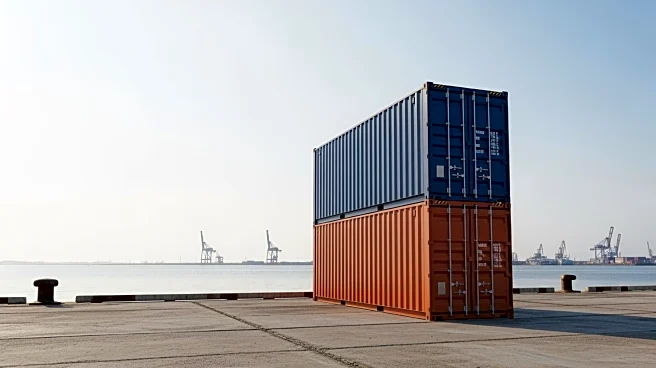What's Happening?
The USTR's new port fee program has come under scrutiny from Atlantic Container Line (ACL) CEO Andrew Abbott, who highlighted a 'bureaucratic blind spot' in the classification of ACL's vessels. Despite carrying 80% containers, ACL's vessels are being
treated as Ro-Ro under the program, which Abbott argues is inaccurate since only 10% of their cargo is Ro-Ro and 1% is cars. The USTR decided to base fees on net tonnage, increasing the fee to $46 per net ton, which Abbott claims could result in unsustainable costs of $34 million per year for ACL. The company operates five ConRo vessels, primarily transporting containers and oversized equipment between the U.S. and Europe.
Why It's Important?
The classification issue in the USTR port fee program could have significant financial implications for ACL, potentially affecting its ability to operate in the U.S. Abbott warns that the fees could force ACL to relocate operations, impacting American manufacturers and exporters who rely on ACL's services. The program's reliance on the International Classification of Ships by Type, rather than the actual cargo, may lead to increased costs for companies with unique shipping needs, potentially disrupting supply chains and increasing costs for critical equipment transportation.
What's Next?
If the classification issue is not resolved, ACL may consider redeploying its operations outside the U.S., which could lead to less frequent and more costly services for its customers. This situation may prompt further discussions between ACL and USTR to address the classification criteria and fee structure. Stakeholders, including American manufacturers and exporters, may advocate for adjustments to the program to prevent disruptions in their supply chains.
Beyond the Headlines
The situation highlights the complexities of regulatory frameworks in international shipping and the potential for unintended consequences when classification systems do not align with operational realities. It raises questions about the adaptability of regulatory systems to accommodate unique business models and the importance of stakeholder engagement in policy development.














